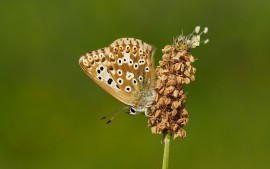by Martin Kalaher
Introduction
Adonis Blue and Chalk Hill Blue are two of our iconic downland species, sharing the same short-turf wildflower meadows. The abundance of these beautiful butterflies is very dependent on the availability of Horseshoe Vetch, which is their sole larval foodplant. Within Sussex there are relatively few places where these two butterfly species fly together but where they do there is ample room for confusion, for although the males are very distinctive, the same cannot be said of the females, which can be very difficult to separate.
Fortunately for us there is only a short overlap of a few weeks between the two species. Adonis Blues have their first flight-period from early May until the end of June. As they disappear so Chalk Hill Blues emerge in late June/early July, usually peaking at the end of July or in early August. As Chalk Hill Blues are on a downward curve the second brood of Adonis Blues emerge sometime in early August and that's when we may see pristine examples of both species.
The males of these two species can be easily separated but the females can be extremely challenging. However, there are subtle differences and the following photographic guide is an attempt at helping us make a correct identification (which may not be possible, all of the time!).
Open Wings
Adonis Blue
The brilliant blue of the uppersides is brighter than any other blue butterfly in the UK. In flight, a male Adonis Blue could be confused with a male Common Blue but at rest the black lines that cross the white outer fringes readily separate these two species. These black lines are referred to as a chequered fringe, a characteristic shared with Chalk Hill Blues.
Adonis Blue
Uniform chocolate-brown uppersides with a contrasting brilliant white outer fringe, and a very neat chequered border points us towards a female Adonis Blue. There are well-defined orange lunules and black studs on the margins of the hindwings and their white surrounds contain some blue scales. The extensive blue hairs on the thorax also suggests Adonis Blue (with Chalk Hill Blue the thorax is usually a dark brown).
Chalk Hill Blue
The outer fringe is an off-white and the broad ill-defined marks crossing the forewings almost merge into one another (compare with the neat pattern of Adonis Blue). The orange lunules/dark studs on the margins of the hindwings are poorly-defined and there is no blue within the white surrounds. There are no obvious blue hairs on the thorax, which is dark brown in colour.
Adonis Blue
The uppersides are a chocolate brown and the outer fringe is very white with a very neat chequered border. There are well-defined orange lunules and black studs on the margins of the hindwings and their white surrounds contain some blue scales. There are extensive blue hairs on the thorax and immediate surrounds.
Chalk Hill Blue
The outer fringe is an off-white and the broad marks crossing the forewings rather ill-defined. The orange lunules/dark studs on the margins of the hindwings are poorly defined and there is no obvious blue on their white surrounds. the thorax is more brown than blue, although there are plenty of blue scales adjacent to the body.
Adonis Blue
Just when identifying a female Adonis Blue was becoming fairly straightforward, this individual has a rather brownish tinge to the outer fringe (not a brilliant white) and the marks across the fringe are not as neat as previous examples. Even the orange lunules at the rear margin of the hindwings are indistinct. However, there are some blue scales surrounding the orange lunules and the thorax is arguably more blue than brown.
Closed Wings
Adonis Blue
The white outer fringe of the underside is chequered, which limits the ID options to Adonis Blue or Chalk Hill Blue. However, the hindwing is a dark brown and the forewing a grey-brown, both of which say Adonis Blue. There are a few blue hairs on the thorax, which says this is a male (which we know anyway, as the uppersides are showing!)
Adonis Blue
The white outer fringe is chequered, the hindwing a dark brown, the forewing a grey-brown, and the thorax is covered in blue hairs. This is a male Adonis Blue. Note the bold orange marks at the rear edge of the hindwing are not present on the forewing (with other blue butterflies such as Common Blue and Brown Argus the bold orange marks are equally present on both wings).
Chalk Hill Blue
Concentrating on the underwing, it is the extreme pallor that immediately points towards a male Chalk Hill Blue. The chequered fringe shows quite well on the forewing but is not that obvious on the hindwing. The well-defined orange marks are small on the rear edge of the hindwing but absent on the forewing.
Adonis Blue
Note the copious blue hairs on the body of the male (on the left) and the absence of blue hairs on the body of the female. Note also the outer fringe of the male is very worn, which must mean it is several days old - and yet he is mating. Either he was unable to find a mate for several days, or Adonis Blue males mate more than once?
Adonis Blue
The white outer fringe with a neat chequered border is indicative of an Adonis Blue and the pale brown body hairs are telling us this is a female. In this individual there are extensive orange markings on the rear edge of the hindwing and some orange on the rear edge of the forewing.
Chalk Hill Blue
The undersides are brown, and the body hairs are brown and so we are looking at a female blue butterfly. Looking at the outer fringe of the forewing, the markings that make up the chequered border are very broad and rather ill-defined, which points towards a Chalk Hill Blue. There is a neat row of orange marks on the rear edge of the hindwing and some ill-defined orange marks on the forewing, which is very similar to a female Adonis Blue.
Adonis Blue
This pair of butterflies have neat chequered borders with white outer fringes. The male on the left has a pale brown hindwing, a grey forewing and the body hairs are blue-grey. The female on the right is a much darker brown and the body hairs are brown.
Picture Credits: Neil Hulme (1,2,6,8,12,13,19), John Williams (3,7,9,16,18), David Cook (5,11,17), Patrick Moore (10), Kirsty Gibbs (14), Barry Sketchley (15), Mark Cadey (20)



-mill-hill-18.5.18-1913389768.jpg)
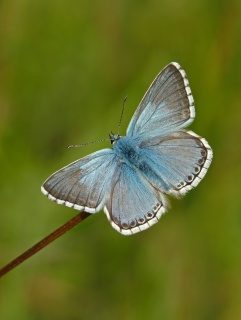
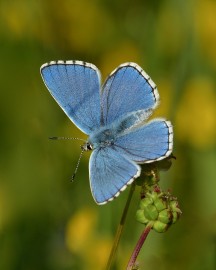
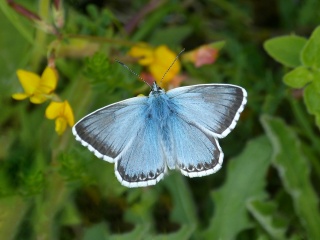
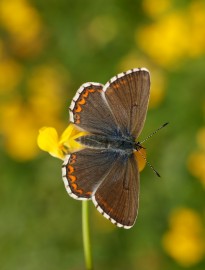
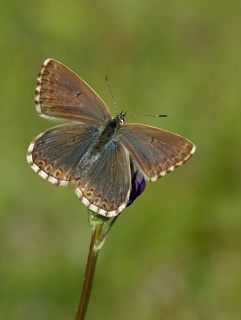
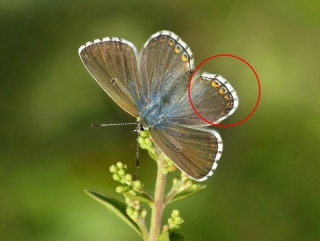
-cissbury-ring-2726133847-2-8993431841.jpg)
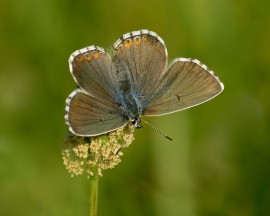
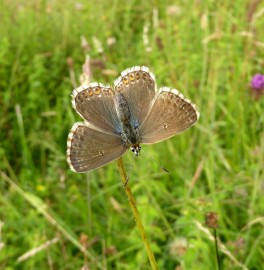
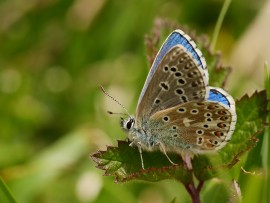

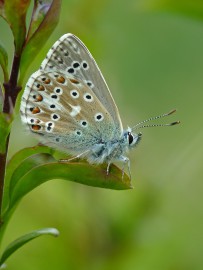
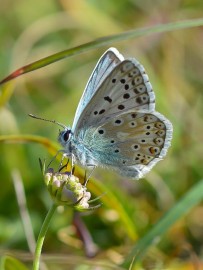
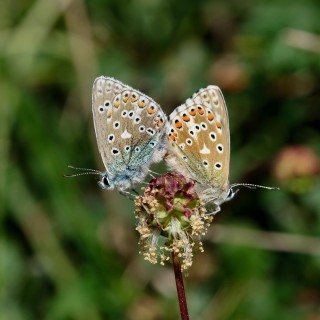
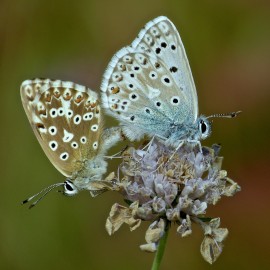
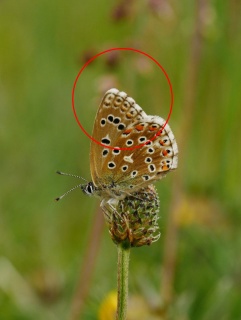
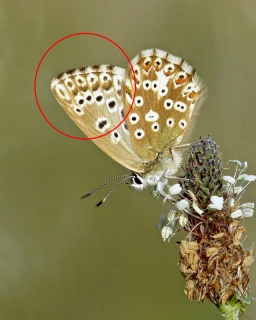
-anchor-bottom-30.5.18-8518655314.jpg)
